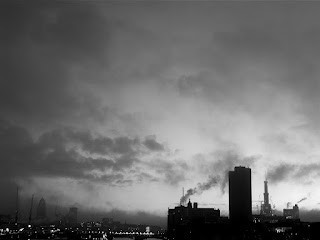If you’ve ever flown in or out of Istanbul by day, and happened to look down, you won’t have seen much more than a sprawling expanse of white. With few green interruptions, the city stretches into a concrete mass about thirty miles deep, and the best part of two hundred miles from it’s eastern to western extremities. Due to the heat-absorbent qualities of concrete, and Turkey’s hot climate, the city becomes largely unliveable for about two months of the year.
In this urban setting, Turkey’s ruling AK Party (AKP) government are pressing ahead with plans to demolish one of central Istanbul’s last remaining green spaces, Gezi Park, removing trees, grass and a children’s park to make way for one more installation of that essential urban space… the shopping mall. The city this week witnessed bloody clashes between the police and protesters defending the park.
Turkey is a country familiar with protests against the socially conservative AKP government, and policies ranging from abortion rights to Turkey’s world-leading record on incarcerated journalists, but the popular and growing resistance to the destruction of Istanbul’s trees has taken politicians by surprise. Thousands of protesters are staging an occupation of the park (on the hashtag #OccupyGezi), and have been visited with messages of support from celebrities and members of opposition political parties. The breadth of the resistance has been matched only by the excessive use of force by the police, rubber bullets, tear gas and water cannon have all been used with a brutality condemned by Amnesty International as “excessive”. A woman being tear gassed at close-range was made an editor’s choice photograph at Reuters, but the response of international news agencies has been slow, even as dawn raids by the police left scores of injured protesters admitted to Istanbul hospitals.
Behind the environmental politics, however, murkier forces are at work. First of all, Turks have witnessed Prime Minister, Recep Tayyip Erdoğan, responding to protests with an assurance that the mall would be built anyway, a clear instance of the anti-democratic philosophy at the heart of his government. Erdoğan and the AKP have slowly adopted a form of rule that participates in democracy at election time, but disregards it flatly during the interim periods. Second of all, central government commitment to a shopping mall project might seem surprising to a western audience, yet the involvement is a clear illustration of the cosiness that now exists between government and Turkey’s largest construction companies. As was feted by former-IMF economist, Jeffrey Sachs, in a recent, rose-tinted visit to Turkey, the country’s construction firms have expanded into central Asia and north Africa, yet the Istanbul property market – by no means immune to bubbles - has provided a solid bedrock to these foreign ventures. The construction contract for a new development of luxury flats was recently awarded to GAP Inşaat, the CEO of which is a son-in-law of Prime Minister Erdoğan.
Lastly, the protests have shown the outside world the brutality of the Turkish police. International commentators have championed the AKP’s dismantling of the Turkish army’s political apparatus, citing it a victory for democracy, while at the same time ignoring the rise and rise of the Turkish police as a force in national politics. Whereas the Turkish military have always been staunch defenders of the country’s secular republic, and thus offered some balancing of power, the police have proved to be a much more pliant custodian of power, and the upper echelons of the force contain individuals known to be close to the AKP. The enthusiastic fashion in which officers have used force against the Gezi Park protesters betrays not only Turkish culture’s traditional indulgence for the culture of the strongman, it also demonstrates the confidence by which the Turkish police can act without fear of accountability or reprimand.
The Gezi Park protests have prompted demonstrations across Europe, with events organised in Rome, Paris, Athens and London’s Hyde Park. As organisers in Istanbul have highlighted, government-backed construction of a shopping centre in Hyde Park, Central Park, or Berlin’s Tiergarten would all be inconceivable. Support has also been forthcoming from inside Turkey's corporate sector, and some of Turkey’s leading fashion brands, in a move of solidarity, have released statements saying they oppose a development so clearly at-odds with popular sentiment, and that they would not wish to participate in any prospective mall on the site of Gezi Park. If the development can be halted, or if the brutality with which the protest is suppressed can help draw a light on some of Turkey’s gravest and most entrenched problems, some good may yet come of the ongoing violence.



